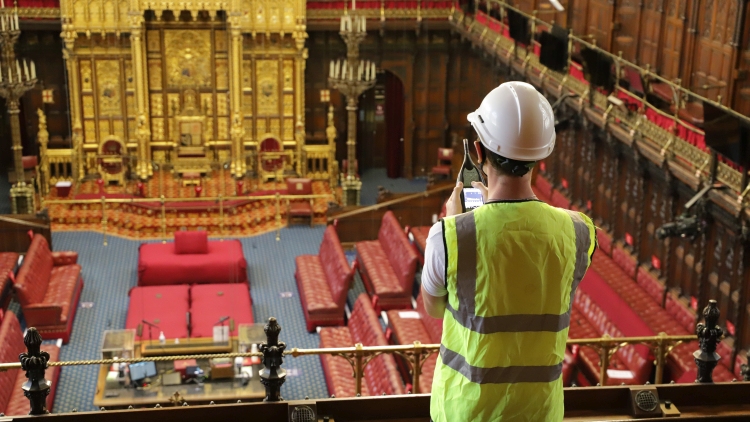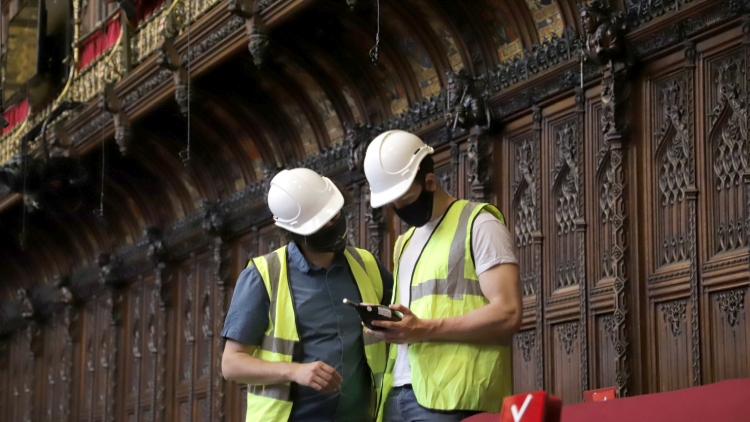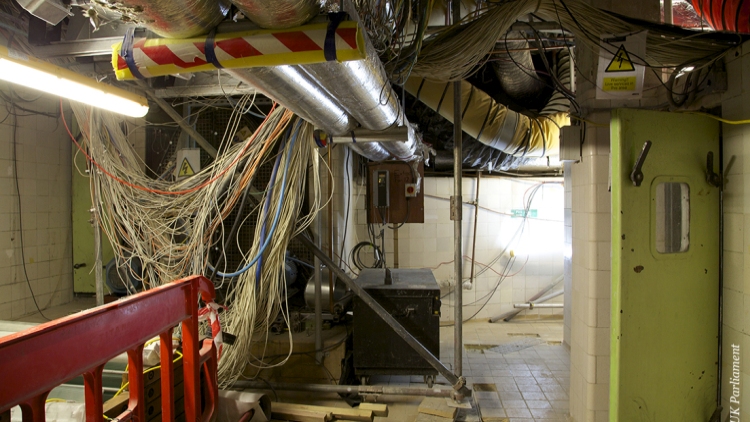
A group of 50 engineers, architectural surveyors, acoustics and lighting specialists and ecologists have investigated crumbing stone, cracked ceilings and warping windows at the Houses of Parliament.
The team has spent a combined 4,700 hours over Parliament’s recess period to examine the 150-year-old Palace of Westminster to create a detailed record of the building.
In total, 2,343 rooms and spaces were examined over the summer and conference recesses, with experts recording thousands of issues including cracks in stonework, widespread water damage, and the analysis of the complex network of outdated electrical and mechanical systems.

The investigations are key to the restoration and renewal of the Palace of Westminster. Parliament will be invited to approve the detailed restoration plan in 2023.
Problems were recorded with many of the historic features, including original Victorian stained-glass windows, which are warping and sagging due to age.
Surveyors also studied the miles of outdated and interweaving gas, electrics, water, sewage, and heating pipes in the basement.
Meanwhile, work was also done to understand the candle and gas light fittings, some of which were discovered to have been turned upside down when converted to electric power more than 100 years ago. It is thought the Palace may contain the oldest still-in-use gas lighting system in the world. Several candle chandeliers that survived the great fire of 1834 which destroyed the original palace were also studied and recorded.
Acoustics experts, considering how to improve audibility within the building, walked 240km while measuring 80 rooms, running 300 individual acoustics tests, and taking 2,000 measurements.
In winter and throughout next year, more detailed examinations, including intrusive surveys into the structure of the Palace, will be completed.

Jacob Rees-Mogg, leader of the House of Commons, said: “The Houses of Parliament building is recognised the world over as a symbol of our nation, but this building requires a considerable level of care to keep it working and needs an essential programme of restoration work.
“We must be able to justify this project to taxpayers. That’s why it’s so important to understand and map out the restoration work needed to protect the building – so that the focus is on those essential works necessary to preserve the Palace for future generations.”
Sarah Johnson, CEO of the Houses of Parliament Restoration & Renewal Sponsor Body, said: “The essential programme to restore the deteriorating Palace of Westminster will protect our world-famous Parliament for generations to come. These critical and complex investigations are already informing our detailed restoration plan, which will for the first time set out a true sense of the costs and timescales of the much-needed work.”











